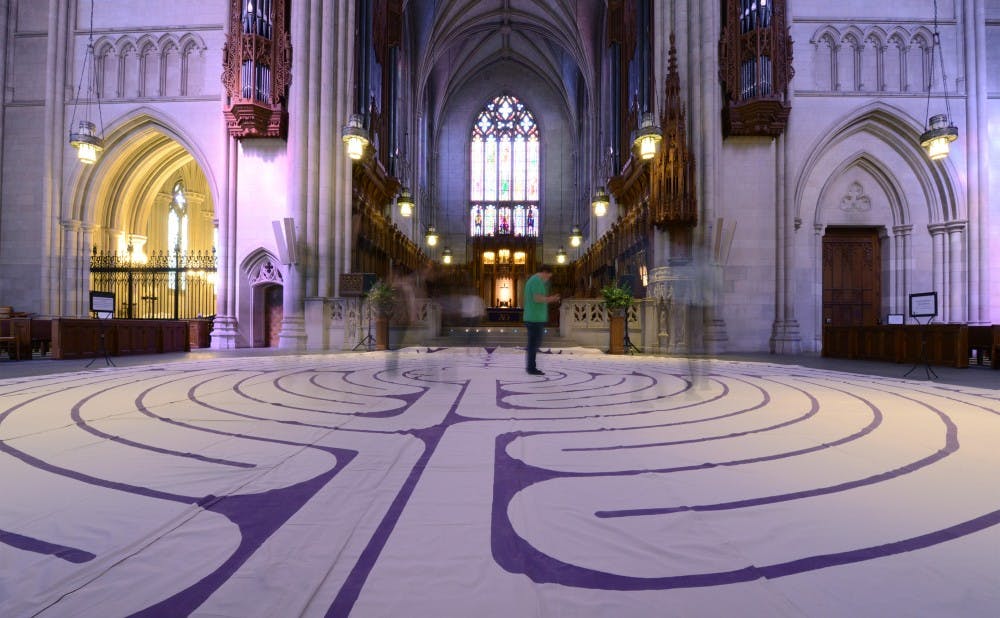On Tuesday, the Duke Chapel erected its annual labyrinth, a temporary path to offer people a place for meditation and self-reflection.
Hoping to attract members of the Duke, Divinity School and Durham communities, the labyrinth is a modern take on an ancient religious symbol used to help people find inner peace when confronted with struggles or difficult decisions.
“Christians in ancient times saw the spiritual value in following a disciplined and deliberate path as a way to dwell in prayer and reflection,” Meghan Benson, director of worship for the Divinity School wrote in an email March 17. “I always appreciate the opportunity to reflect on life’s journey and the twist and turns a journey can take, even as I feel safe within the wider embrace of the purpose within the labyrinth.”
Jeanette Stokes, executive director of the Resource Center for Women and Ministry in the South, noted that the origin of labyrinths as places of fascination, reflection and comfort dates back to ancient civilization.

“Labyrinths go way back to ancient Egypt and Crete. Spirals and labyrinths seem to be patterns that fascinate humans,” she said.
The labyrinth was built to cater to all audiences and to help any in need of solace or a space for worship, though Stokes noted it is particularly helpful for adults.
"It is a great tool for meditation and it is also a container for worry, grief, hopes and dreams. Some people gain insights while walking,” she said.
Although erecting the maze is a labor-intensive process, volunteers and Duke employees who contributed to the project considered it an honor to do so.
“I count [setting up the labyrinth’ as a privilege. Usually the folks to set the labyrinth are a set of volunteers, often Divinity students, and a few staff people,” Benson said.
That’s not to say the labyrinth was quick work.
It took 80 volunteers dedicating several hours apiece to construct this labyrinth, Stokes noted.
"I’m a Christian, and I find it to be a very helpful tool. For me, I’m better able to focus on prayer and thinking through things,” said Andrea Davis, collection services associate for the Divinity School. “This labyrinth has caused me to seek out other labyrinths.”
Others believed the labyrinth gave them the opportunity to consider important life decisions.
“I gave myself images and questions that have to do with decisions I have to make in the next year with my work and family balance,” local resident Betty Wolfe said. “When I had some time in the middle, one thing became clearer: I need some more information in one part of my life.”
The Divinity School hopes that the labyrinth will continue to prove helpful and relevant in the future, and that followers will continue to seek out the structure in times of need.
“Labyrinths went out of style a couple hundred years after 1200 and were not used anymore, “ Stokes said. "Modern people have been able to reinvent and rediscover uses for them.”?
Get The Chronicle straight to your inbox
Signup for our weekly newsletter. Cancel at any time.

